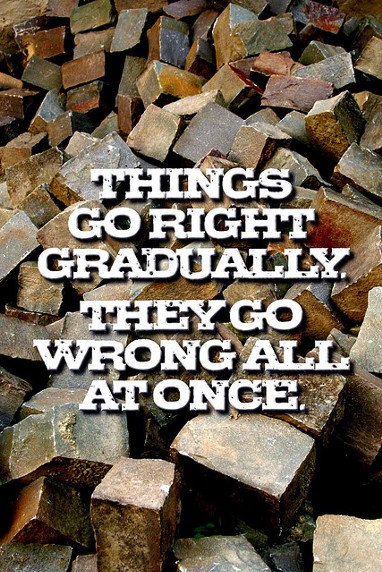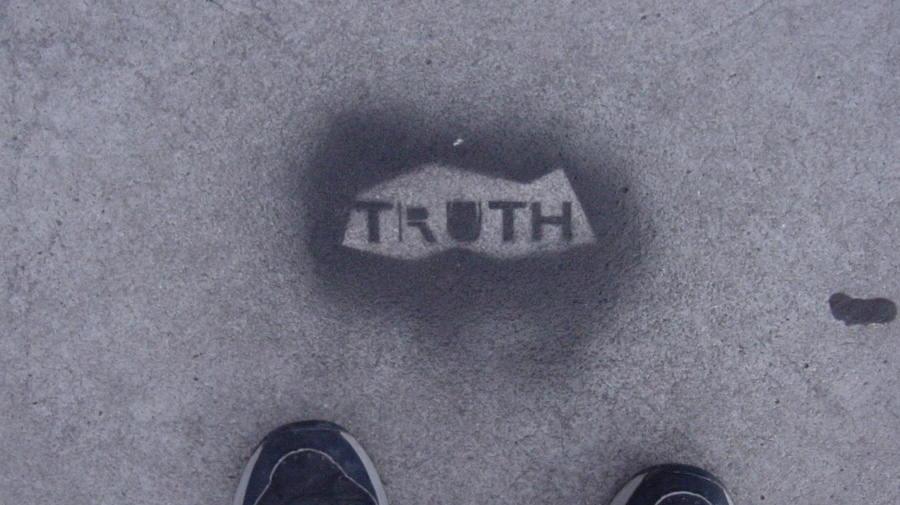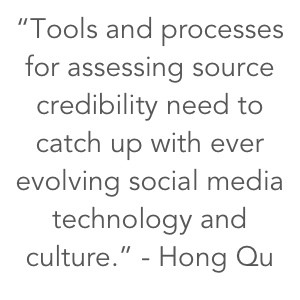I have a confession to make… I am a verification junkie.
For almost half a decade now I’ve been exploring how rumors, lies and misinformation travel through social networks and find their way into journalism. I’m particularly interested in how communities and journalists make sense of the flood of information that emerges around breaking news events, and how we can better equip people to assess the validity of what they are seeing and empower people to shut down bad information, not spread it.
This is fundamentally about trust, and about how we can leverage the immense power of networks to meet community information needs in times of crisis and disaster.
In 2013 I launched Verification Junkie, a growing directory of apps, tools, sites and strategies for verifying, fact checking and assessing the validity of user-generated content and eyewitness media online. I created Verification Junkie because if we are going to head off bad information we all need to become a little more skeptical. We are all going to need to become Verification Junkies.
Cultivating a culture of verification
As breaking news moves from news bulletins to news feeds, and social media becomes an invaluable tool for citizens and journalists alike, it also presents unique challenges. In his piece, Twitter, Credibility and The Watertown Manhunt, Hong Qu argues that “Tools and processes for assessing source credibility need to catch up with ever evolving social media technology and culture.”
As Qu points out, there are two key forces we need to contend with as we think about social media and user-generated content verification: technology and culture. Verification Junkie is aimed at the first half of that equation: the technology. On the site I profile and link to useful, interesting and emerging tools and apps that citizens, journalists or newsrooms can use in their day-to-day work. The emphasis here is on the useful, concrete tools people are building to help assess the validity and accuracy of eyewitness media — text, video and photos.
However, just having the tools won’t solve the problem if we don’t foster a culture that values verification. In general, people want to be trustworthy media makers and distributors of content. Indeed, during breaking news events many people take to social media to find a way to help, to lend aid, attention, or amplification to support those in crisis or spread the word about an important issue. Journalists and newsrooms want to serve their communities and keep their audience informed, but there is still too often a rush to be first.
Much of online culture rewards being fast and flashy more than being right and careful. Analytics will tell you how many retweets you got, how many video views you earned, and how many page views you drove to your site, but analytics won’t distinguished between right and wrong.
Online culture rewards being fast and flashy more than being right and careful.
The tools highlighted on Verification Junkie are meant to help us slow doing and ask the right questions. They encourage us to be skeptical, help us assess source credibility, check the facts. These are basic ideas, but social media demands we ask those questions in new ways. Now we need to know about metadata on photos, location data on tweets, and timestamps on videos and how to mine the Facebook graph search.
Be the verifciation you want to see

brett jordan/Flickr. Some rights reserved
When it comes to breaking news, our technology and our culture are intertwined. As the culture of our online communities are still being negotiated it is more important than ever that we model the kind of behavior we want to see.
Twitter provides a good example of the duality of technology and culture in debates about verification and accuracy. Some argue that we — the users of Twitter — need to develop better practices and cultural norms around verification and correcting our errors (perhaps a twist on the shorthand that has been developed for “retweet” and “modified tweet”). Others argue we need better features or apps to help combat misinformation on the platform. Really, we need both.
Verification and misinformation isn’t one problem but two: 1) preventing errors and 2) correcting errors and limiting their spread.
Verification and misinformation isn’t one problem but two: both preventing errors, and correcting errors while limiting their spread. As such, we need a range of responses including, but not limited to: training, shifts in norms, new tools, better processes and forms of accountability. And, critically, these ideas and debates cannot stop at the newsroom, but must also engage the public, readers, and audiences who are active and critical participants in the networked journalism.
Verification Junkie is one piece of the puzzle, but it is also a work in progress. You can submit tips and ideas for the site via Twitter @jcstearns.





